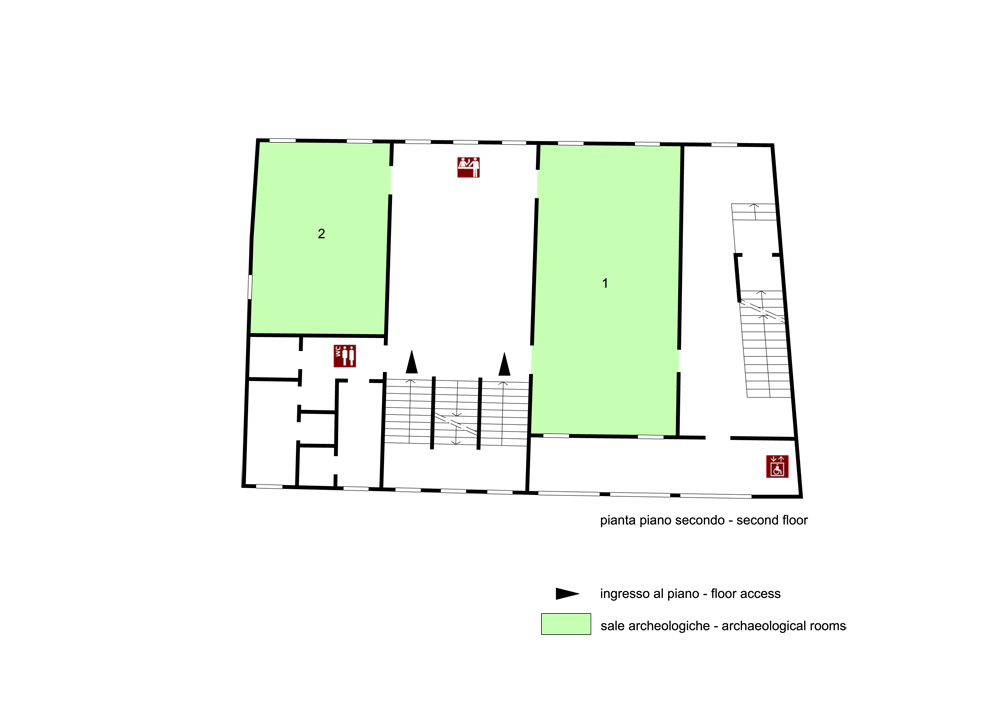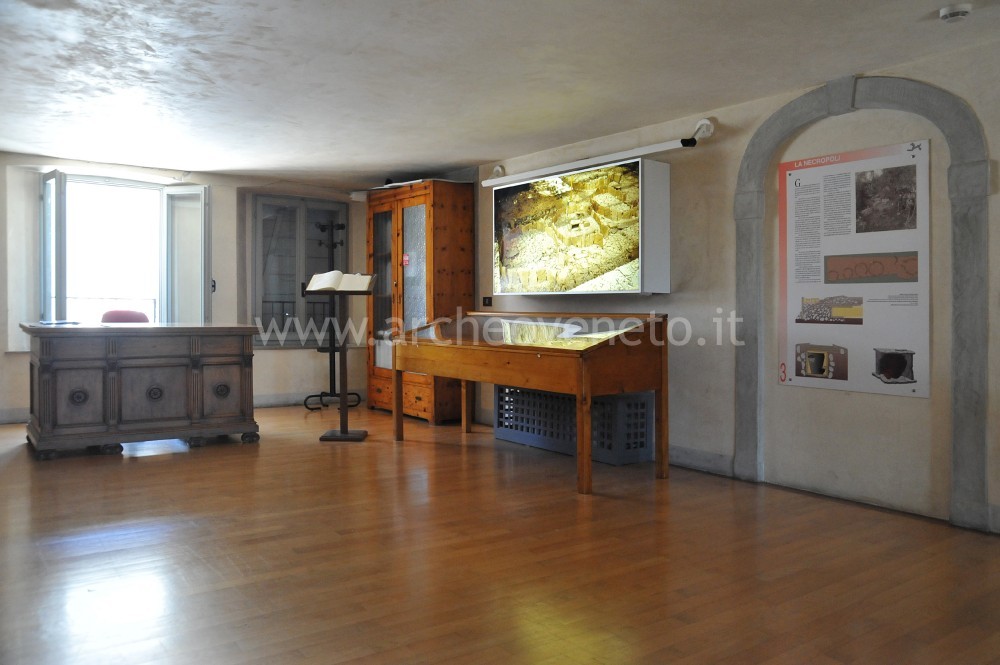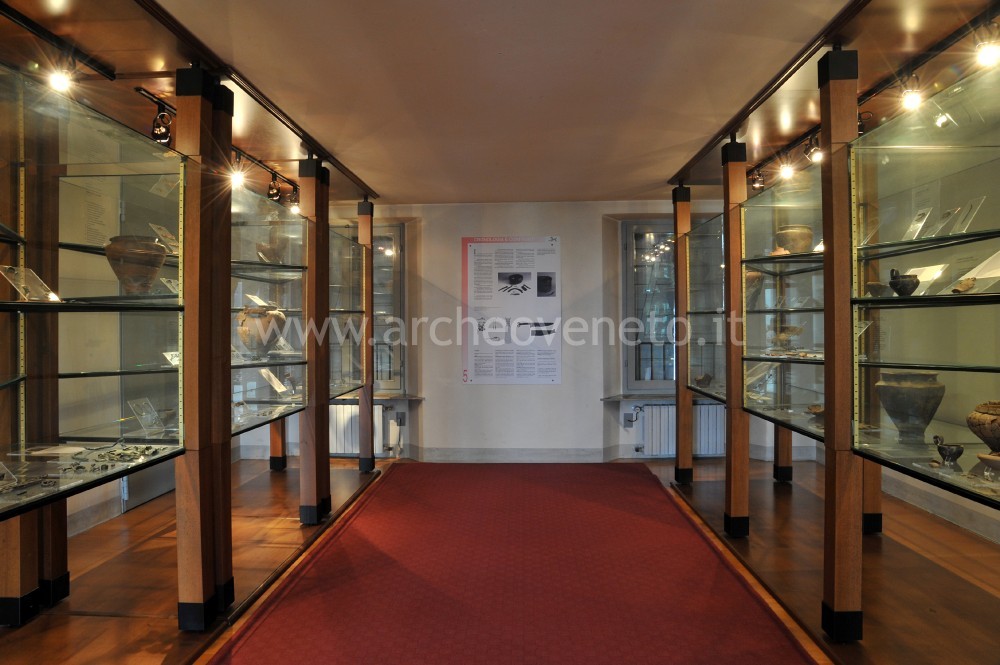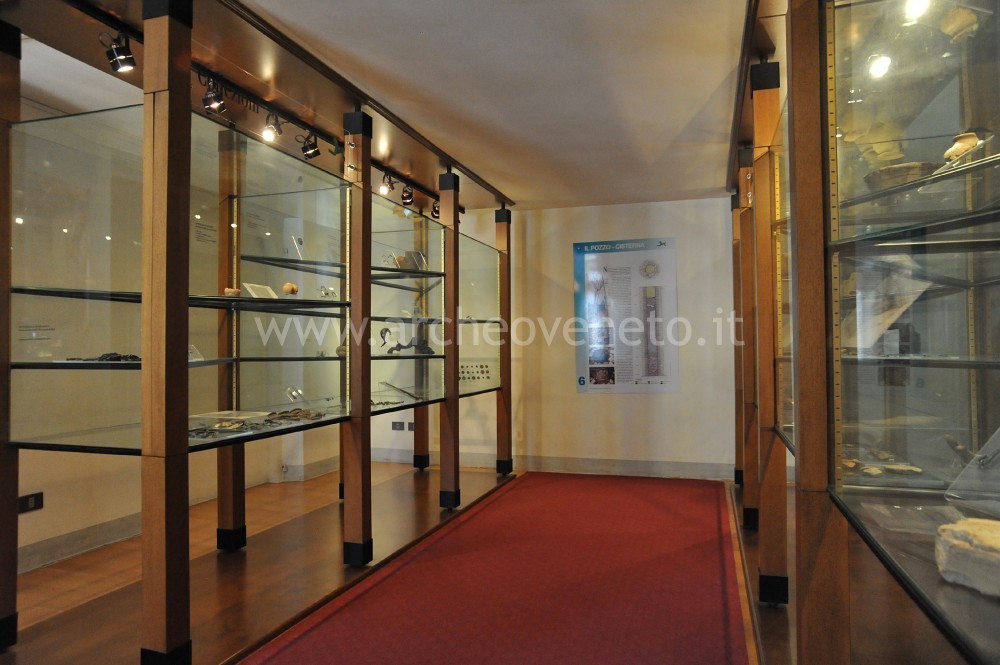| Piazza Papa Luciani 7 - 32026 Mel (BL)
Tel. 0437 80820; 0437 544216 (municipio) - Fax 0437 544222 (municipio) |
Web site http://www.comune.mel.bl.it |
|
Summary
The Civic Archaeological Museum is located on the second floor of the ancient Countesses’ Palace on the main square of Mel. The museum is organized in two small rooms, which display in a rational and very effective way the archaeological finds discovered in Mel in the area of the well-known necropolis dating back to the Iron Age (8th-5th cent. B.C.) and in the settlements inhabited by the Venetian people first and then by the Romans, which have been surveyed at various times in the site of Ciopa. Moreover it is also possible to see interesting finds discovered in the area of Mel and coming from private collections (Chiarelli, Curtolo).Collection history
The establishment of the Civic Archaeological Museum in the prestigious venue of the Countesses’ Palace dates back to 1996 with the purpose of properly enhancing the important archaeological finds discovered in the necropolis of Mel during the excavation carried out between 1958 and 1964 by Giovanni Battista Frescura (assistant of Giulia Fogolari, who at the time was the head of the regional board for the Venetian antiquities). Beside the remarkable amount of artefacts, it is possible to see the important finds related to the area of the coeval settlement inhabited by the Venetian people, which was discovered in the site Ciopa in 1995. Then in 2006 the exhibition was further enlarged with the introduction of new display cases containing the materials that have been recently discovered in different settlements inhabited by the Venetian people first and by the Romans later, which were mainly concentrated in the site of Ciopa.
|
 |  |
|
Visiting
Admission: Negli orari di apertura
Su prenotazione;
Ticket: No;
 School access School access
 Disabled access Disabled access
|
Recommended tour time (minutes): 30 |
|
Services for visitors
 Toilet Toilet Parking Parking Rest points Rest points |
Educational Services
 Brochure BrochureThe information material does not include the display cases added in 2006.  Information boards Information boardsItalian  Captions under exhibits Captions under exhibitsItalian  Multilingual ads: Inglese Multilingual ads: IngleseCD-Rom in English  Guided Tours Guided Tours Extra-charge |
Bibliography
| Mel. Museo Civico Archeologico. Guida interattiva (CD-ROM) 2002, Ponte nelle Alpi. |
| I Veneti antichi: inizia il viaggio 2003. |
| Musei e raccolte archeologiche del Veneto 2004, a cura di Di Mauro A., Dosson di Casier, pp. 35. |
| Gangemi G. 2005, Dall'età del Ferro alla romanizzazione, in Belluno. Nel regno delle Dolomiti, Cittadella, pp. 44-48. |
| Bonetto J. 2009, Veneto (Archeologia delle Regioni d'Italia), Roma, pp. 426. |


